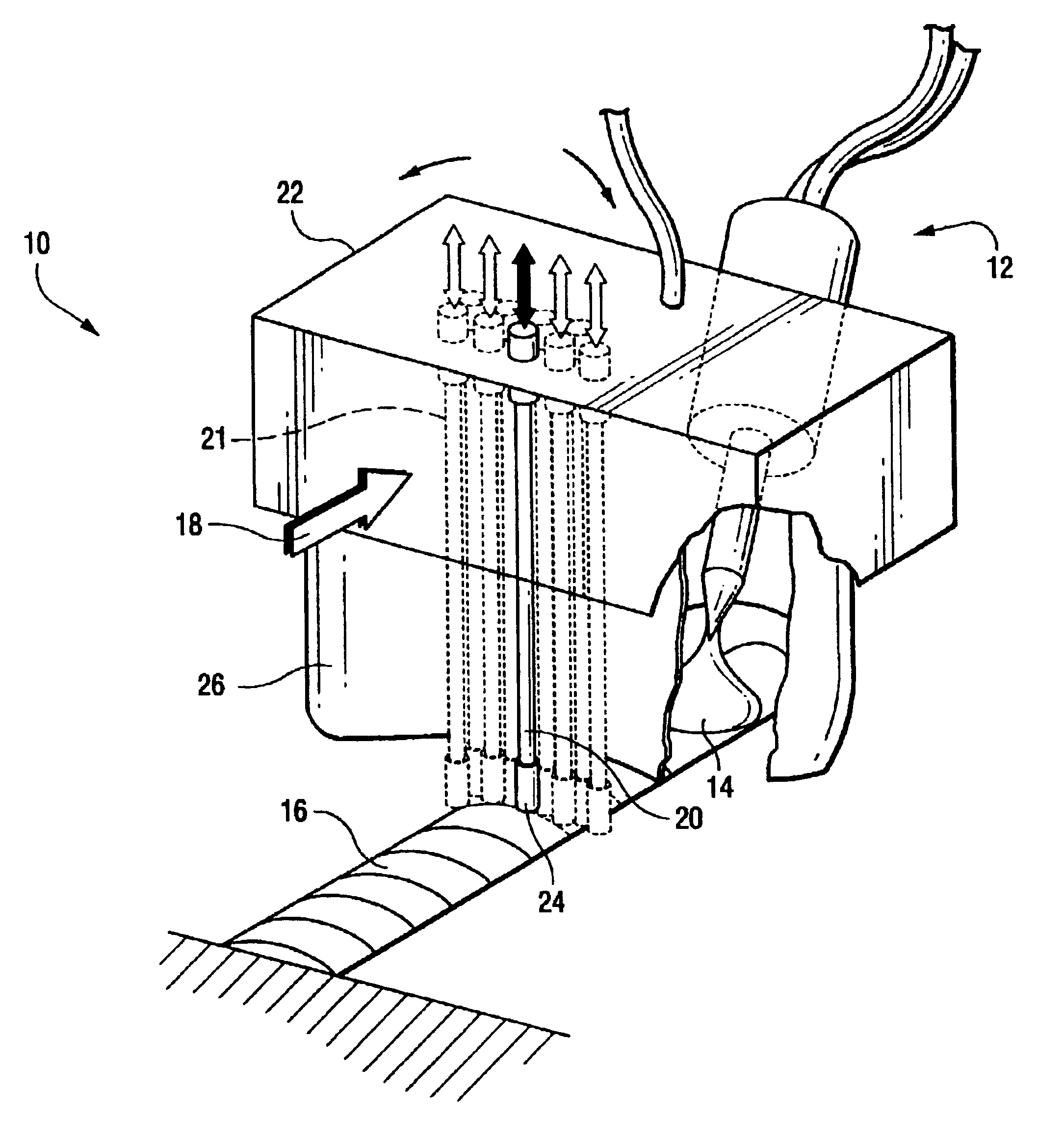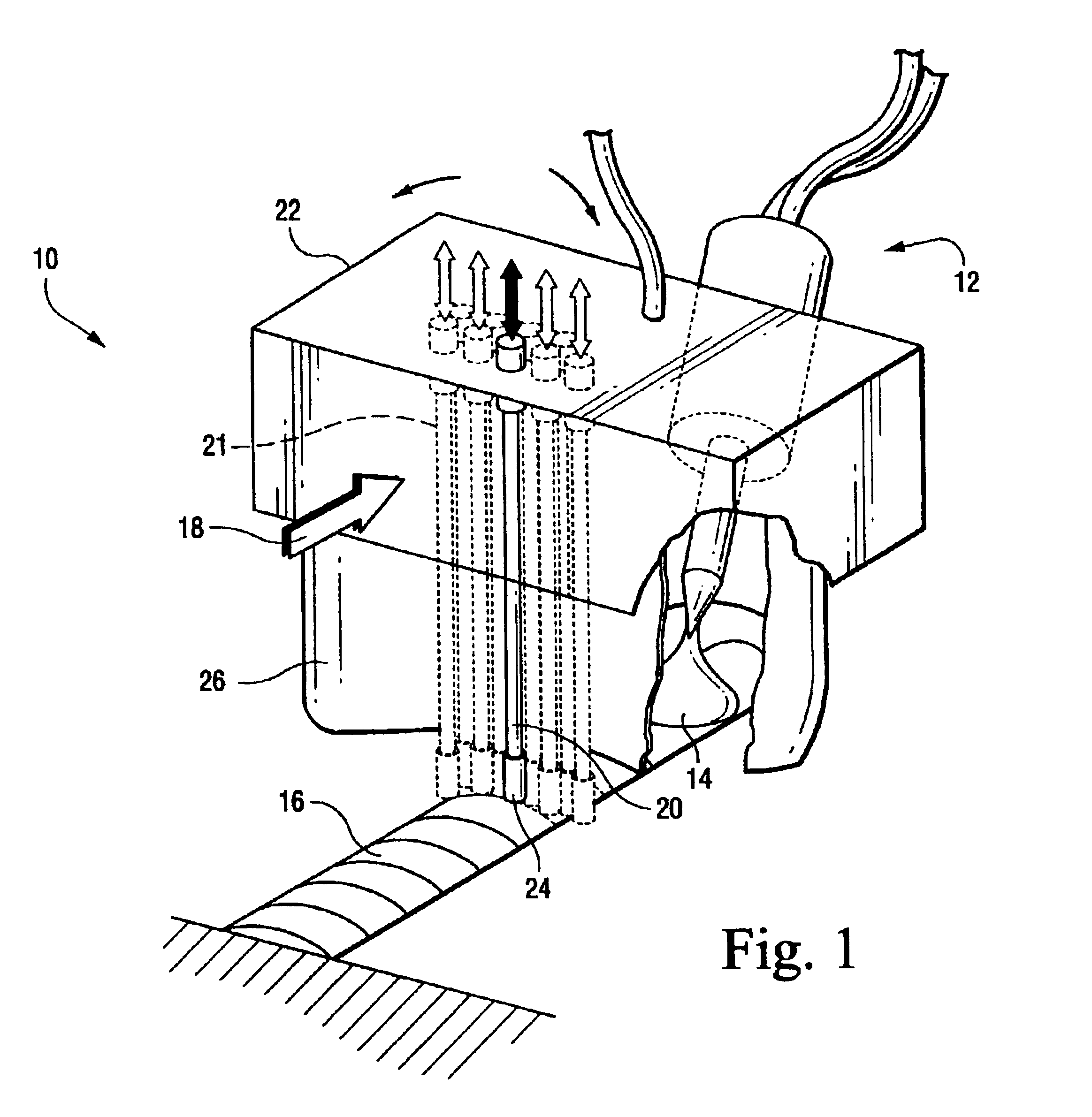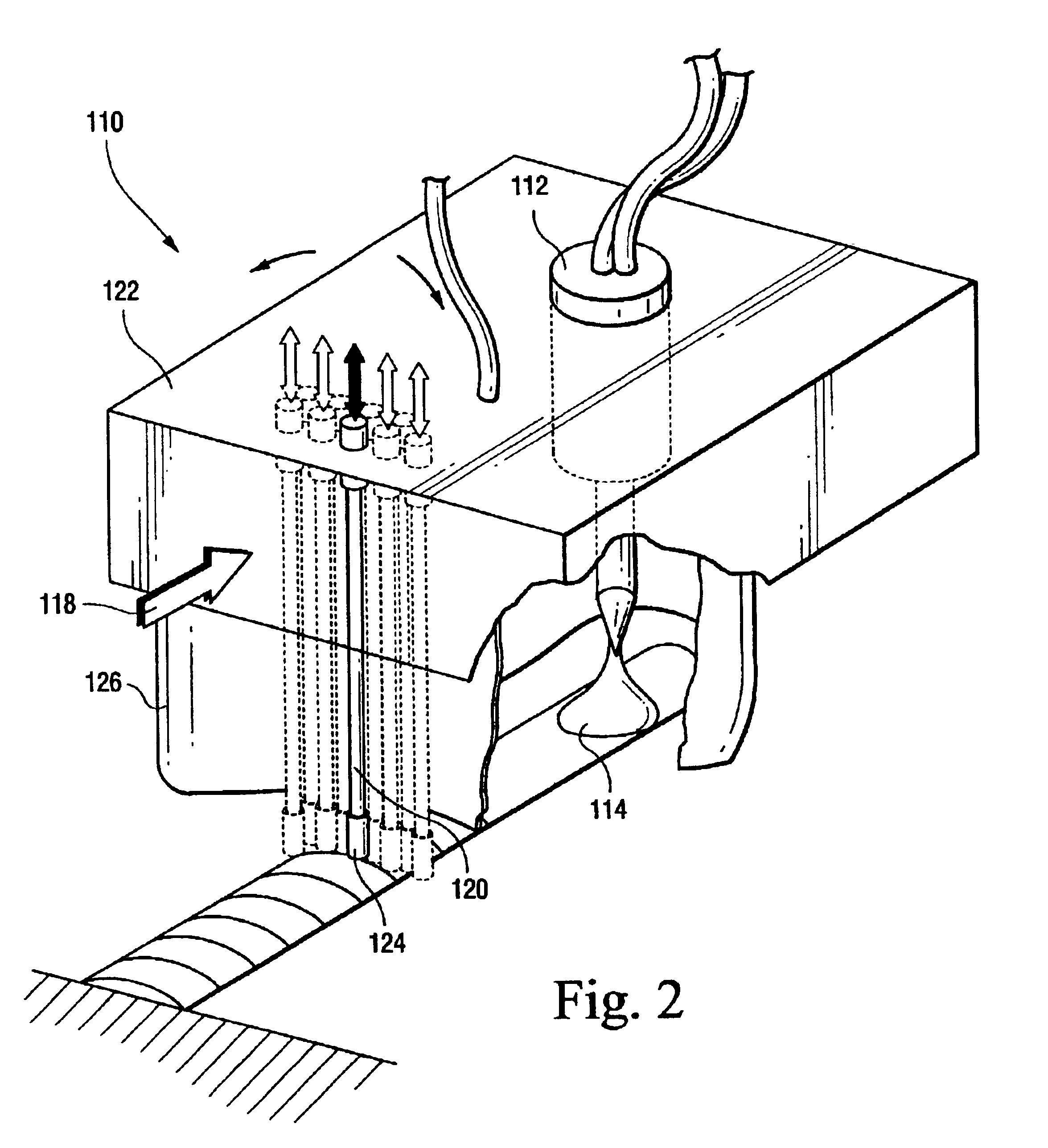Method for welding on stress-sensitive materials
a stress cracking and welding technology, applied in the field of welding, can solve the problems of reducing the service life of the material, so as to reduce or eliminate post-weld stress corrosion cracking
- Summary
- Abstract
- Description
- Claims
- Application Information
AI Technical Summary
Benefits of technology
Problems solved by technology
Method used
Image
Examples
Embodiment Construction
[0021]Referring now to the drawings, particularly to FIG. 1, there is illustrated a combined compression and heat sinking tool generally designated 10 in conjunction with a welding heat source generally indicated 12. The welding heat source may be any type of fusion welding heat source; for example, electric arc, laser beam or electron beam and with or without added weld material. The heat source 12 is illustrated forming, with or without added weld material, a weld pool 14 eventually forming a weld bead 16. The weld bead 16 may be applied at the juncture of two adjoining parts to secure the parts one to the other, or may be provided in an overlying manner to a surface to provide a cladding. It will be appreciated from a review of FIG. 1 that the direction of the welding is in the direction of the arrow 18.
[0022]Tool 10 includes a multiple element compression tool 21 comprising a plurality of pins or needles 20 carried by a housing 22. By means not shown, the needles or pins 20 are ...
PUM
| Property | Measurement | Unit |
|---|---|---|
| temperature | aaaaa | aaaaa |
| residual stresses | aaaaa | aaaaa |
| stress corrosion cracking | aaaaa | aaaaa |
Abstract
Description
Claims
Application Information
 Login to View More
Login to View More - R&D
- Intellectual Property
- Life Sciences
- Materials
- Tech Scout
- Unparalleled Data Quality
- Higher Quality Content
- 60% Fewer Hallucinations
Browse by: Latest US Patents, China's latest patents, Technical Efficacy Thesaurus, Application Domain, Technology Topic, Popular Technical Reports.
© 2025 PatSnap. All rights reserved.Legal|Privacy policy|Modern Slavery Act Transparency Statement|Sitemap|About US| Contact US: help@patsnap.com



